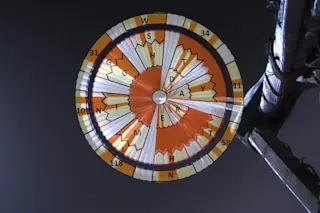Don't look now, but apparently the revolution has begun. John Rogers from the University of Illinois and Max Lagally from the University of Wisconsin announced this week that they created a way for cameras to capture images on a curved surface, rather than the flat surface used by regular film and digital cameras. It's a design based on the mammalian eye, and it's made possible by stretchable electronics made from silicon, which allow cameras to capture wide-angle images without the pictures being distorted. Rogers says his finding, especially the idea of putting circuits on elastic surfaces, could someday lead to electronics that can integrate with the human body. But the British Newspaper The Telegraph isn't willing to wait, publishing the story with the headline, "Bionic Eye Heralds Cyborg Revolution." It's an exciting finding, but sadly, many years of research, development, and testing stand between us and creating The Terminator. So ...
Worst Science Headline of the Week: Cyborg Edition
Discover how curved surface camera technology, inspired by mammalian eyes, is set to revolutionize imaging and electronics integration.
More on Discover
Stay Curious
SubscribeTo The Magazine
Save up to 40% off the cover price when you subscribe to Discover magazine.
Subscribe












